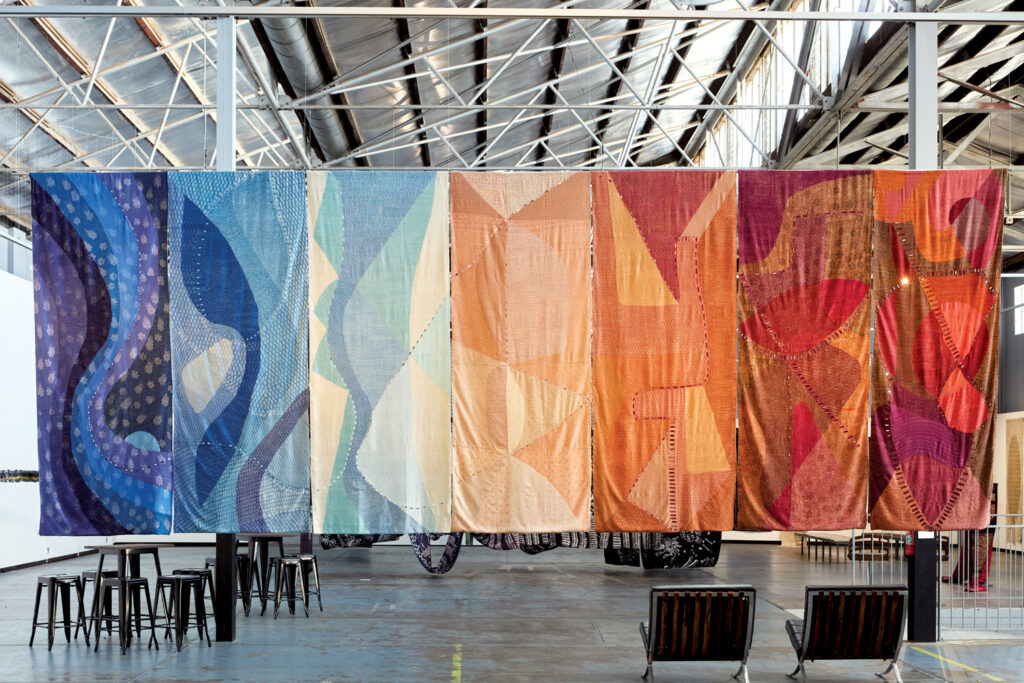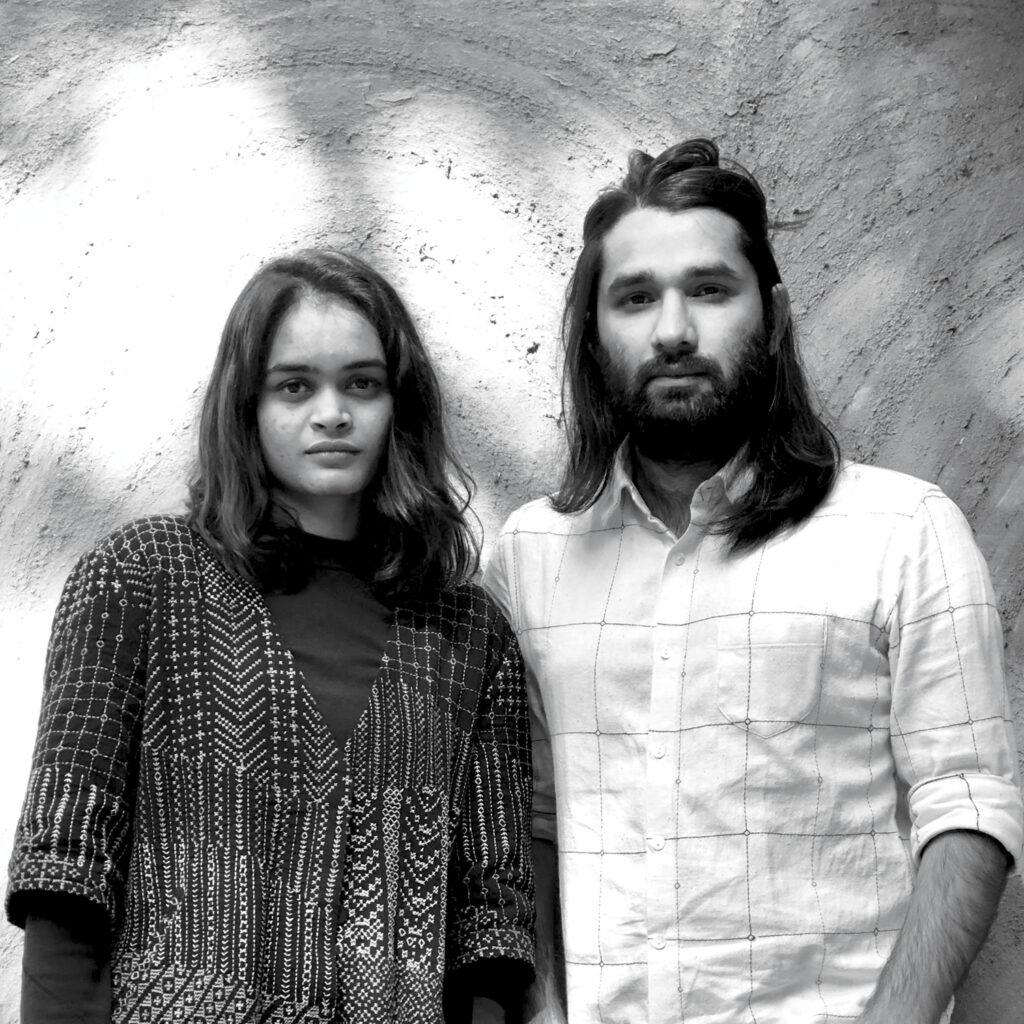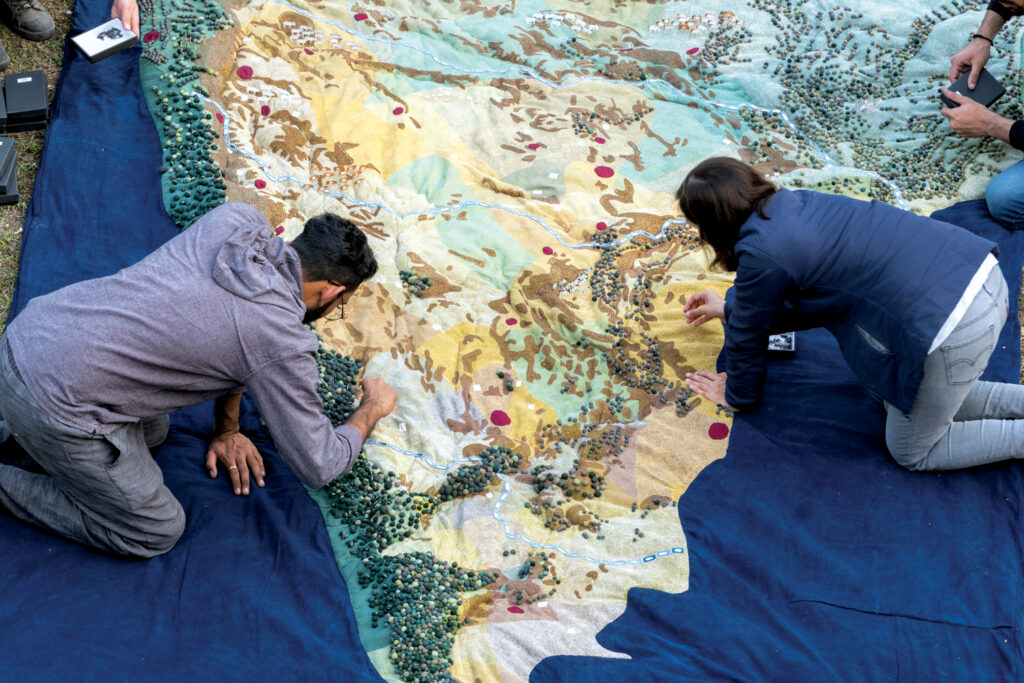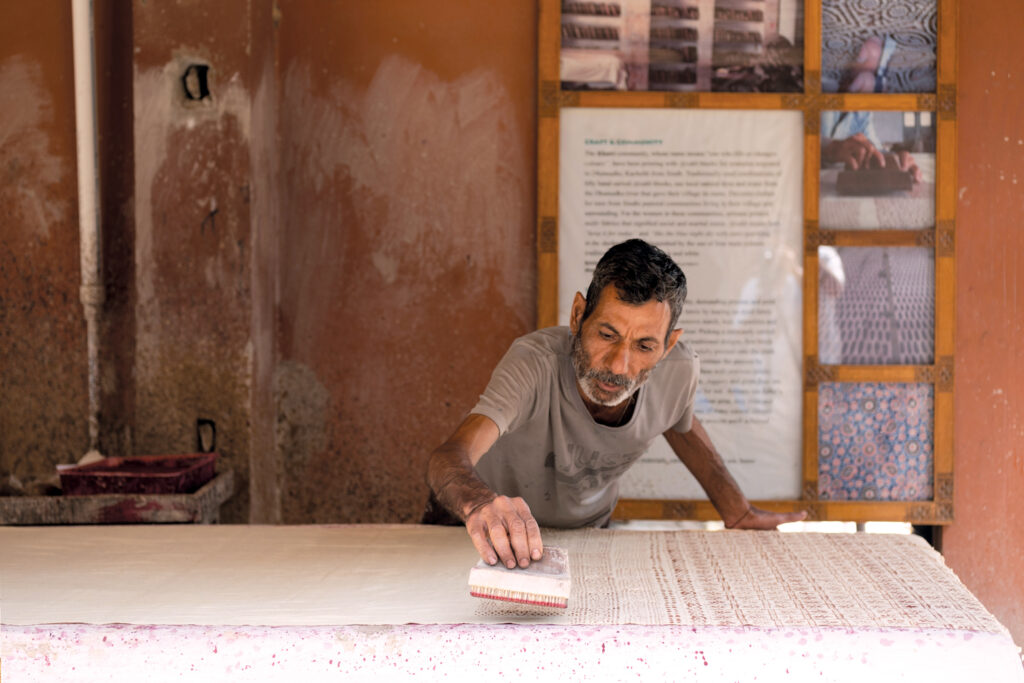
Morii Design, a textile art studio based in Gandhinagar, India, specializes in working with artists who practice traditional Indian crafts. The studio’s name comes from the Japanese word mori, which means “forest.”
“It reflects our commitment to sourcing natural materials and collaborating with artisans rooted in heritage,” Morii’s website reads. “It symbolizes a return to a time when villages were self-sustainable, much like a forest ecosystem.”

Textile designer Brinda Dudhat founded the studio in 2019 with the help of Kabir, a graphic designer and now Dudhat’s husband. Dudhat and Kabir aim to fight the exploitation of artists whose work is being replaced by mass-produced imitations. Textile art from the studio comes from 165 women artisans from 12 villages across India.

Dudhat was inspired to start Morii after learning about the challenges Sujni embroiderers face in gaining recognition. Artists within the Sujni community in the state of Bihar specialize in making quilts that are used to wrap a newborn in after birth, mimicking the embrace of their mother. The quilts consist of layers of colored cloth from old saris and dhotis, sewn together with threads also taken from the used garments. They often have everyday objects on them, such as stoves, knives, pots and pans.

In the city of Bhuj, Morii works with artists from the Jat and Rabari communities. The Jat community practices embroidery done only on the yoke, using a single stitch, to create a fixed number of geometric shapes. The spaces in the grid are filled with bold colors and small round mirrors. For women in the Jat community, embroidering for the studio offers them a way to financially support their families while staying within the domestic sphere.

The Rabari indigenous community continues traditional Rabari embroidery practices. The pieces, including clothing, wall hangings, pillow covers and bags, often feature motifs with plants, animals, jewelry and temples.
In the state of Gujarat, Morii supports the artist Mansukh Pitambar Khatri, the only person still practicing the traditional craft of Bela hand-block printing. He completes the entire process himself, from washing to printing and dyeing.
 TEXTILES.ORG
TEXTILES.ORG


